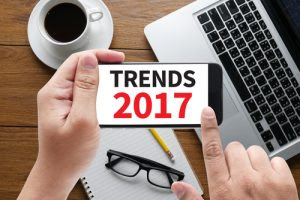In the past few years, the healthcare sector has made significant advancements owing to technology. The miniaturization of medical devices and more powerful wearables will continue to transform both prevention and cure in healthcare. Due to this, we now have access to large amounts of real-time data serving as the foundation for AI (artificial intelligence) and ML (machine learning) to create solutions for the sector.
In the future, the healthcare industry will become smarter to ensure better delivery of care. Predictive analysis will aid doctors with smart algorithms that mine their patient’s data set; complete with previous diagnoses, treatments or genetic information. AI and ML will help doctors diagnose and predict the likelihood of treatment success.
Technology will help support doctors’ decisions but will not replace them—the doctor will always have more context to patients, mainly because of the complex and intuitive nature of patient care that only a doctor can provide. The technology will help doctors in treatment but interpreting the qualitative signals and personalized nuances that patients reveal will always rest with doctors.
Today, people generally go to a doctor or a provider when they are sick; it is more episodic. In the future, we will see healthcare being delivered as a subscription where providers are actively involved in your care and reach out to you for an intervention instead of the other way round. This will be made possible with wearables, as providers will have access to real-time data. Access to patients’ digital health records will also help greatly; analytics will help a provider understand and take decisions faster, even predict if the patient is likely to fall sick and, thus, take measures. Electronic health records will not only map the patient’s medical history but also allow healthcare institutes and doctors to access information without having to sift through piles of paper notes.
Thus, with access to data and analysis, health practitioners can also practise remote monitoring in real time, which means doctors can take the help of technology to diagnose accurately; the information will also be pre-analysed so that doctors can take decisions faster. Maybe there could be alerts set up as well in case there is an immediate need or change in a patient’s condition. If, say, a diabetic’s glucose levels are within a predetermined range, the information is just recorded for future reference. If the glucose levels are problematic, both caregiver and patient will get a message saying, “We need to connect.”
This will also help in better continuum of care, further bridging the gap between the patient and healthcare provider; it will revolutionize patient-doctor relationships. Imagine that your grandmother is a hypertension patient—you open the healthcare app on your smartphone and log in to her digital health record, which shows that according to her cardiologist, she needs to take the prescribed medication to lower her blood pressure and, based on her lab test, she needs to get an ECG check periodically. The software will update you on when your grandmother’s next check-up is due and book an appointment based on your preference. It will also alert you on her medicine intake schedule.
Thus, the way healthcare practitioners deliver care will change as it becomes more personalized, faster and more accurate.
This will also help patients take better care of themselves, for access to data and analysis will enable wearables to predict health problems and offer advice on potential lifestyle changes based on one’s health and genetic history, predict recovery duration, and suggest the right doctor in accordance with the patient’s profile. In the future, algorithms will help to map patient history to the extent that they will be able to predict the future generation’s health/disease patterns, making treatment faster and more effective.
With tremendous scope for innovation, the possibilities for ensuring better healthcare outcomes are enormous. I think we have just scratched the surface of what technology and healthcare can do together…the best is yet to come.
Source



























